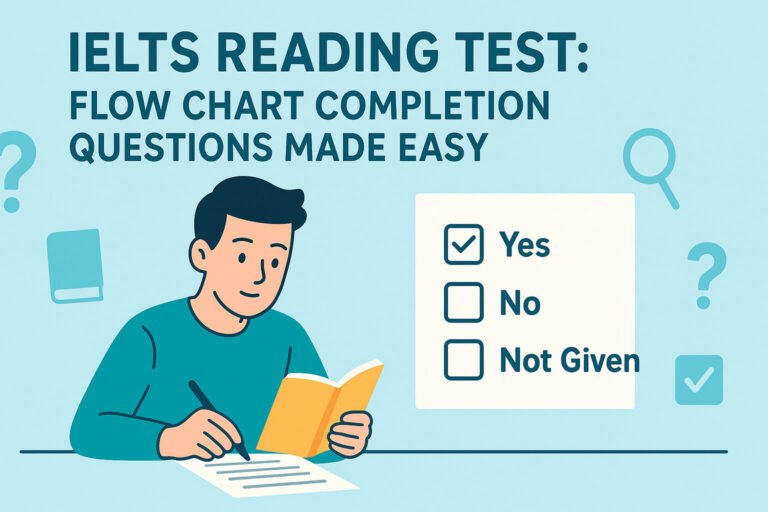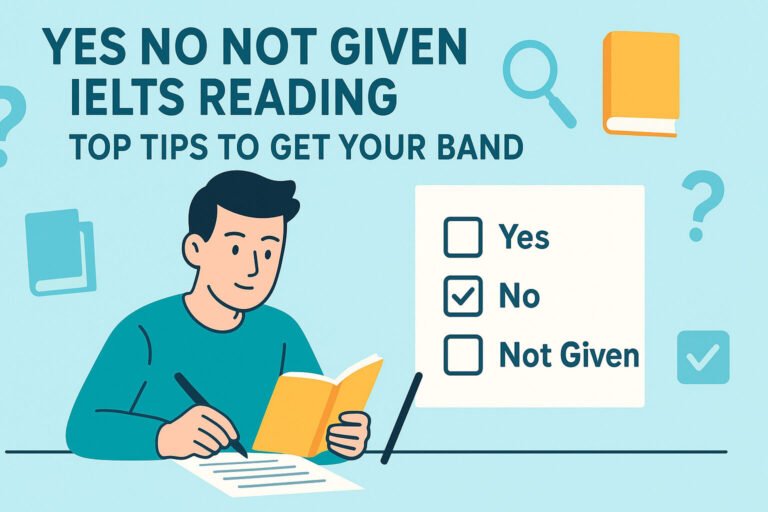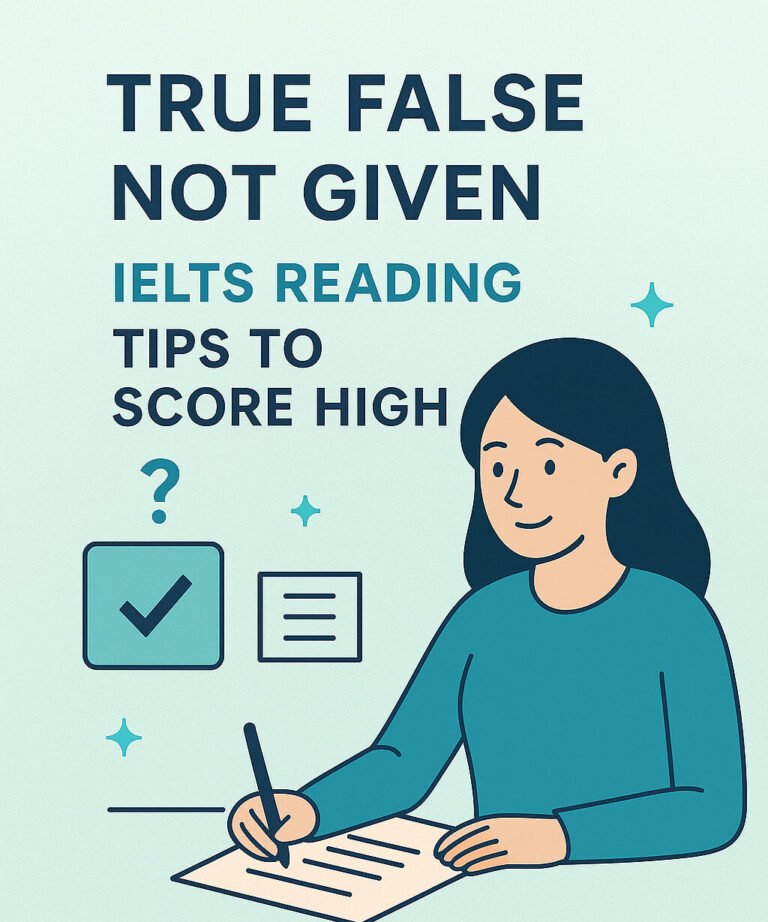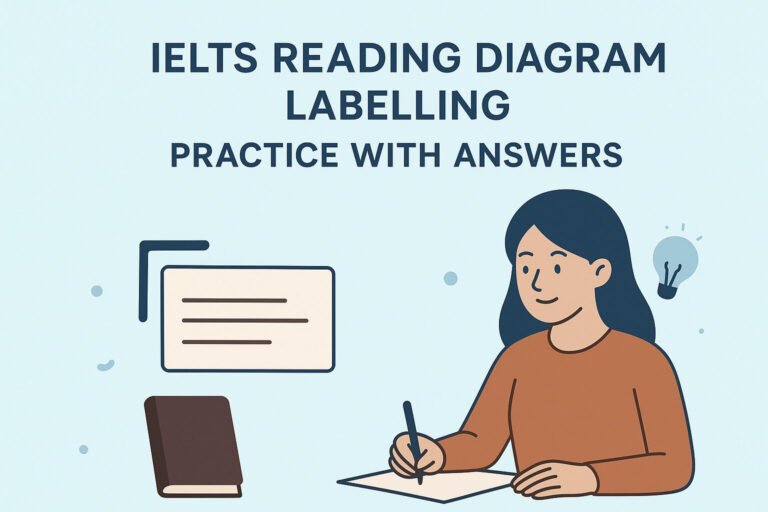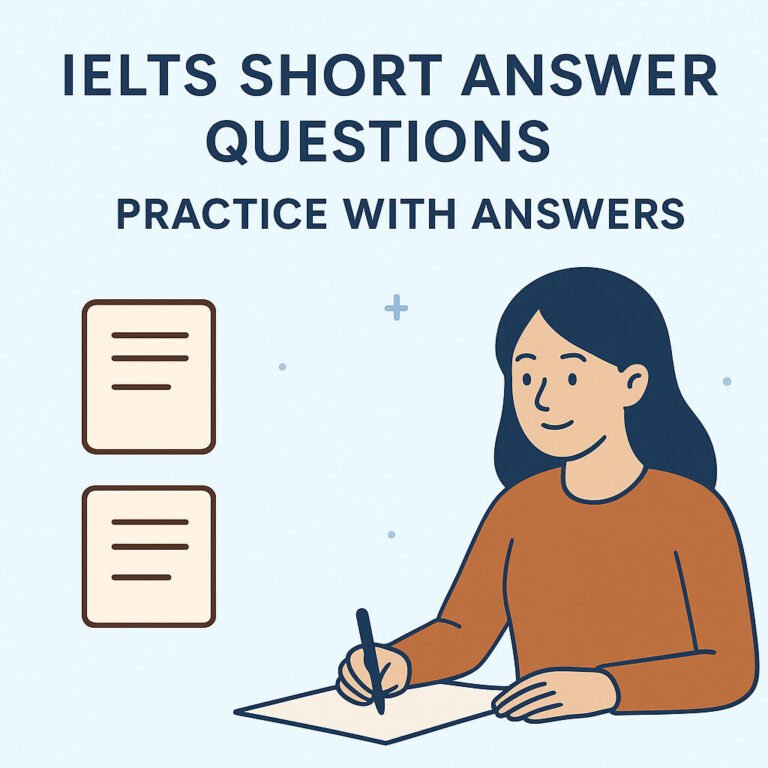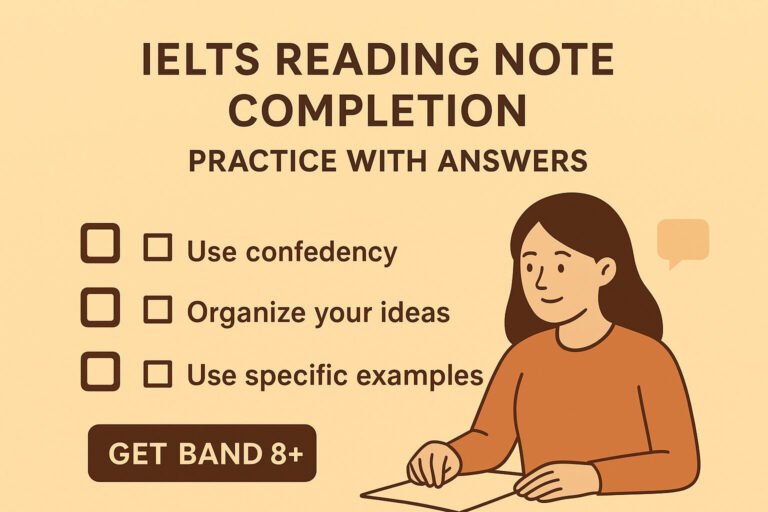Are you staring at an IELTS Reading passage, puzzled by questions like “Which paragraph contains the following information?” Don’t worry—you’re not alone! Paragraph matching in IELTS Reading can feel like solving a puzzle under time pressure. It’s a task that tests your scanning skills, comprehension, and ability to stay calm. Mastering paragraph matching IELTS Reading is crucial because it’s a common question type that can make or break your Band 7+ dreams. In this guide, we’ll break down proven strategies, share real examples, and provide practice tips to help you conquer Matching Paragraph Information: IELTS Reading Exercise with confidence. Ready to boost your score? Let’s dive in!
Why Paragraph Matching Matters in IELTS Reading
The IELTS Reading section is a 60-minute race against time, with 40 questions across three passages. Paragraph matching IELTS Reading questions, also called “Matching Information to Paragraphs,” ask you to link specific statements to the correct paragraph in a passage. These questions test your ability to quickly locate and understand key information—a skill vital for academic success abroad.
Failing to master this task can cost you precious points. But with the right approach, you can turn this tricky section into a score booster. Let’s explore how to tackle IELTS Reading Matching Information: Strategies, Examples to ensure you’re prepared.
Paragraph matching is a high-stakes task that rewards quick scanning and precise comprehension—skills you’ll master with this guide.
👉 Join Our Telegram Channel to Download IELTS Academic/General PDF and Audios
🎧 Includes all Listening Audios + Speaking Videos + Answer Explanations + Writing Samples.
Understanding Paragraph Matching Questions
In IELTS Reading – Matching Paragraph Information, you’ll see a list of statements, each describing a specific detail, idea, or fact. Your job is to match each statement to the paragraph (labeled A, B, C, etc.) that contains the relevant information. Unlike heading-matching tasks, these questions focus on specific details rather than the main idea.
Here’s what makes it challenging:
Time pressure: You have about 1.5 minutes per question.
Distractors: Similar ideas may appear in multiple paragraphs.
Paraphrasing: The statement won’t match the passage word-for-word.
For example, a statement might say, “The impact of climate change on coastal areas,” while the passage uses synonyms like “effect of global warming on shorelines.”
Expect paraphrasing and focus on specific details, not just the main idea, to match statements accurately.
Step-by-Step Strategy for Paragraph Matching IELTS Reading
To excel in IELTS Reading Matching Information: Strategies, Examples, follow this structured approach:
Step 1: Skim the Passage First
Start by skimming the entire passage for 2–3 minutes to get a general sense of its structure and topics. Pay attention to:
Topic sentences: These often summarize the paragraph’s main point.
Keywords: Look for names, dates, or specific terms that stand out.
Step 2: Read the Statements Carefully
Analyze each statement in the question list. Underline keywords or phrases that indicate the specific information to find, like “a solution to reduce pollution” or “a historical event in 1995.”
Step 3: Scan for Synonyms and Paraphrases
IELTS loves to test your vocabulary through paraphrasing. For example:
Statement: “Benefits of recycling programs”
Passage: “Advantages of waste reduction initiatives”
Make a mental note of synonyms or related terms as you scan.
Step 4: Match One Statement at a Time
Focus on one statement, scan the passage for relevant information, and match it to the correct paragraph. Write the paragraph letter (A, B, C) next to the statement to stay organized.
Step 5: Double-Check for Distractors
Some paragraphs may contain similar information. If you’re unsure, re-read the paragraph to confirm it matches the statement’s specific focus.
Pro Tip: If a statement mentions a specific detail (e.g., a year or a person), search for that first—it’s often a quicker way to find the right paragraph.
Skim, scan, and match systematically while watching for paraphrases and distractors to save time and avoid mistakes.
Real Example: Paragraph Matching Practice
Let’s try a mini IELTS Reading matching paragraph information practice. Below is a short passage with a sample question.
Passage:
Paragraph A: Urban farming has gained popularity due to its environmental benefits. It reduces carbon emissions by minimizing food transport. Studies show it can cut emissions by up to 20%.
Paragraph B: Community gardens foster social bonds. They provide spaces for residents to connect and share knowledge about sustainable practices.
Paragraph C: Critics argue urban farming is costly. Setting up rooftop gardens requires significant investment in infrastructure.
Question: Which paragraph contains the following information?
The cost of establishing urban farms.
Answer: Paragraph C (Critics argue urban farming is costly…).
Explanation: The statement uses “establishing” while the passage says “setting up,” showing how paraphrasing works. Always look for synonyms!
Practice with real examples to get comfortable spotting paraphrased information quickly.
Common Mistakes to Avoid
Even strong candidates slip up in Matching information IELTS Reading practice. Here are pitfalls to watch for:
Rushing without skimming: Skipping the initial skim can leave you confused about the passage’s structure.
Ignoring paraphrasing: If you only look for exact words, you’ll miss the match.
Mixing up similar ideas: Always double-check to ensure the paragraph fully matches the statement.
Slow down to skim effectively, focus on synonyms, and verify your matches to avoid costly errors.
Practice Exercise: Matching Paragraph Information
Here’s a Matching paragraph information exercises to sharpen your skills. Use the passage below and match the statements to the correct paragraphs.
Passage:
Paragraph A: Solar energy is increasingly affordable. New technologies have reduced panel costs by 30% since 2015.
Paragraph B: Wind turbines generate clean energy but face challenges. They can harm bird populations if not placed carefully.
Paragraph C: Hydropower remains a reliable renewable energy source. It supplies 16% of global electricity.
Statements:
A reduction in the cost of solar panels.
Environmental concerns related to wind energy.
The contribution of hydropower to global electricity.
Answers:
Paragraph A
Paragraph B
Paragraph C
Practice Tip: Time yourself (3–4 minutes) to simulate exam conditions. Check your answers and note any paraphrasing you missed.
Regular practice with timed exercises builds speed and accuracy for IELTS Reading Matching Information strategy.
Quick Tips for Paragraph Matching Success
Tip | Why It Helps |
|---|---|
Skim first | Understands passage structure |
Underline keywords | Focuses your scanning |
Look for synonyms | Overcomes paraphrasing |
Check one statement at a time | Prevents confusion |
Re-read for distractors | Ensures accuracy |
Use this table as a quick reference to stay on track during practice and the actual test.
How to Practice Effectively
To master IELTS Reading Matching Information exercises, incorporate these habits:
Use Official Resources: Practice with authentic IELTS materials from Cambridge IELTS.
Time Your Practice: Set a timer for 15–20 minutes per passage to mimic exam conditions.
Review Mistakes: Analyze why you got a question wrong—did you miss a synonym or misread the statement?
Expand Vocabulary: Learn synonyms for common IELTS topics like environment, education, or technology.
Check out our guide on IELTS Reading Diagram Labelling Tips for more practice with related question types.
Consistent, timed practice with quality resources is the key to mastering paragraph matching.
FAQs: Paragraph Matching IELTS Reading
Q1: What is paragraph matching in IELTS Reading?
A: It’s a question type where you match statements to the paragraph containing the relevant information, testing your scanning and comprehension skills.
Q2: How can I improve my speed in paragraph matching?
A: Skim the passage first, underline keywords in statements, and practice timed exercises to build speed and accuracy.
Q3: Why do I keep choosing the wrong paragraph?
A: You might be missing paraphrases or falling for distractors. Double-check synonyms and ensure the paragraph fully matches the statement.
Q4: Are there practice tests for paragraph matching?
A: Yes! Use Cambridge IELTS books or online resources like ieltsnest.com for authentic Matching paragraph information exercises.
Q5: How much time should I spend on paragraph matching questions?
A: Aim for 1–2 minutes per question, leaving time to double-check your answers.
These FAQs address common concerns and provide quick solutions to boost your confidence.
Final Thoughts: Your Path to IELTS Success
Mastering paragraph matching IELTS Reading with answers is like learning to navigate a new city—it takes practice, but soon it feels second nature. By skimming strategically, scanning for synonyms, and practicing regularly, you’ll turn this challenging task into a strength. Keep a positive mindset, and don’t let paraphrasing trip you up. With these strategies, you’re well on your way to a Band 7+ in IELTS Reading!


